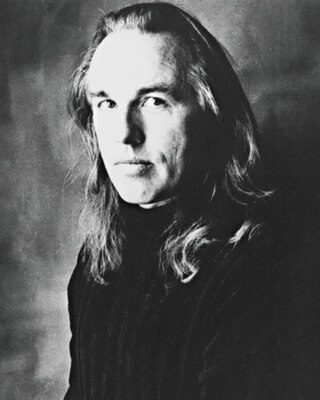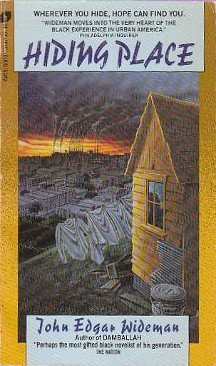 | |
| Author | John Edgar Wideman |
|---|---|
| Genre | Memoir |
| Publisher | Holt, Rinehart and Winston |
Publication date | 1984 |
Brothers and Keepers is a memoir written by John Edgar Wideman. It was published by Holt, Rinehart and Winston in 1984.
 | |
| Author | John Edgar Wideman |
|---|---|
| Genre | Memoir |
| Publisher | Holt, Rinehart and Winston |
Publication date | 1984 |
Brothers and Keepers is a memoir written by John Edgar Wideman. It was published by Holt, Rinehart and Winston in 1984.
Two brothers, Afro-Americans, John and Robert, grew up together in the same neighborhood in Homewood. But they lived very different lives. On November 15, 1975, the author's younger brother, Robert, was involved in a botched robbery that left a man dead. Being unemployed and in need of money to buy heroin he and his friends tried to steal a truck load of stolen TV sets. One of his accomplices shot the fence and who was trying to run away. Wanted for armed robbery and murder, Robert and his accomplices ran for three months. Suddenly Robert turns up at John's house in Laramie and stays overnight. He was arrested by the police the next day. John was a writer and taught literature and creative writing at the University of Wyoming at that time. As John got involved with them, he became a suspect in the police. Robert, a junkie, drug dealer and thief was eventually sentenced to life in a Pittsburgh prison with no chance of parole, even though it wasn't him who shot the man. During his time in prison Robert is frequently visited by his brother John. Robert writes and talks to him about his experiences in the prison. He also studied for a college degree while in prison. [1] [2]
According to Lionel Mandy there are "at least two books within these covers". The first is a "biographical family portrait of the Widemans and their forebears", while the "second book concerns the prison and the larger society within which it exists." [3]
The New York Times says that "by combining his [the author's] own literary skill with the candor and vitality of his brother's street style, Mr. Wideman gives added power and dimension to this book about the contrary values and goals of two brothers. It is a rare triumph in its use of diverse linguistic styles". He "uses an impressive array of literary skills" and "convincingly mimes the rhythms and style of the Depression writings of Carl Sandburg and Margaret Walker." [1]
The book was a finalist for the National Book Critics Circle Award in 1984. [4] The New York Times describes the book as a "gripping account of the events, social pressures and individual psychological responses that led his brother Robert to prison for murder and him [the author] to a middle-class life as a professor of English", as well as "a sensitive and intimate portrayal of the lives and divergent paths taken by two brothers". It is furthermore described as a "source of some powerfully written scenes in which he conveys his impressions of American prisons", especially the experiences with the guards, "the Keepers", who degrade the prisoners as well as their guests. He has "succeeded brilliantly in both understanding his brother's life and coming to terms with his own." [1] Kirkus Reviews describes the book as having a "powerful initial grab [...], but only sporadic flickers of drama and insight amid the narrative convolutions." [5]
Published in 1985 in the UK by Allison and Busby, the book was described by Edward Blishen in The Guardian as a "brilliant and most moving attempt by John Edgar Wideman, black American novelist and academic, to write his brother out of a merciless prison sentence." [6]
Brothers and Keepers was frequently quoted in Didier Eribon's 2018 book Returning to Reims .

Michael Hague is an American illustrator, primarily of children's fantasy books.
Robert Arthur Peel was a Christian Science historian and writer on religious and ecumenical topics. A Christian Scientist for over 70 years, Peel wrote editorials for the Christian Science Monitor, a publication owned by the Church of Christ, Scientist. He was also a counsellor for the church's Committee on Publication, set up by Mary Baker Eddy (1821–1910), the religion's founder, to protect her own and the church's reputation.

"A" Is for Alibi is the first mystery novel in Sue Grafton's "Alphabet" series, and was published by Holt, Rinehart and Winston in 1982. Featuring sleuth Kinsey Millhone, it is set in the southern California city of Santa Teresa, the nom de plume for Santa Barbara. She wrote the book during a divorce and admits about her husband that she "would lie in bed at night thinking of ways to kill him". The New York Times gave the book a lukewarm review.

John Edgar Wideman is an American novelist, short story writer, memoirist, and essayist. He was the first person to win the PEN/Faulkner Award for Fiction twice. His writing is known for experimental techniques and a focus on the African-American experience.

The Great Train Robbery is a best-selling 1975 historical novel written by Michael Crichton, his third novel under his own name and his thirteenth novel overall. Originally published in the US by Alfred A. Knopf, it was later published by Avon, an imprint of HarperCollins Publishers. The novel tells the story of the Great Gold Robbery of 1855, a massive gold heist that takes place on a train travelling through Victorian-era England on 22 May 1855. Most of the book takes place in London. A 1978 film adaptation was written and directed by Crichton.

Albert James Young was an American poet, novelist, essayist, screenwriter, and professor. He was named Poet Laureate of California by Governor Arnold Schwarzenegger from 2005 to 2008. Young's many books included novels, collections of poetry, essays, and memoirs. His work appeared in literary journals and magazines including Paris Review, Ploughshares, Essence, The New York Times, Chicago Review, Seattle Review, Brilliant Corners: A Journal of Jazz & Literature, Chelsea, Rolling Stone, Gathering of the Tribes, and in anthologies including the Norton Anthology of African American Literature, and the Oxford Anthology of African American Literature.
John Treadwell Nichols was an American novelist. He wrote the New Mexico Trilogy - The Milagro Beanfield War (1974), The Magic Journey (1978), and The Nirvana Blues (1981) - as well as numerous other works of fiction and nonfiction.
Paul Robert Spike is an American author, editor in chief and journalist. He is best known as the author of the 1973 memoir Photographs of My Father about the murder of his father, civil rights leader Robert W. Spike, in 1966.
Brother's keeper may refer to:
Rinehart & Company was an American publishing company founded in 1946. Renamed Rinehart & Company in 1946, the publishing company merged with Henry Holt and Company and the John C. Winston Company in 1960, to form Holt, Rinehart and Winston (HRW).
Mr Gumpy's Outing is a children's picture book written and illustrated by John Burningham and published by Jonathan Cape in 1970. According to library catalogue summaries, "All the animals went for a boat ride with Mr Gumpy. Then the boat got too heavy ..."; "Mr Gumpy accepts more and more riders on his boat until the inevitable occurs." Burningham won the annual Kate Greenaway Medal from the Library Association, recognising the year's best children's book illustration by a British subject, and the Boston Globe–Horn Book Award, a similar award by a magazine for a picture books published in the United States.

Hiding Place is a novel by the American writer John Edgar Wideman set in Pittsburgh, Pennsylvania, during the 1970s. It was first published in 1981 by Avon Books in New York, and subsequently in London by Allison & Busby in 1984.

The Book of est is a fictional account of the training created by Werner Erhard, (est), or Erhard Seminars Training, first published in 1976 by Holt, Rinehart and Winston. The book was written by est graduate Luke Rhinehart. Rhinehart is the pen name of writer George Cockcroft. The book was endorsed by Erhard, and includes a foreword by him. Its contents attempts to replicate the experience of the est training, with the reader being put in the place of a participant in the course. The end of the book includes a comparison by the author between Erhard's methodologies to Zen, The Teachings of Don Juan by Carlos Castaneda, and to Rhinehart's own views from The Dice Man.
Georgess McHargue was an American writer and poet.

In the Clearing is a 1962 poetry collection by Robert Frost. It contains the poem "For John F. Kennedy His Inauguration", much of which Frost had composed to be read at President Kennedy's inauguration but could not. The book is also known for "Kitty Hawk", the book's longest poem, which muses on the Wright Brothers' accomplishment in manned flight.
Frederick Roberts Rinehart (1902–1981) was an American book publisher. Rinehart was a son of mystery writer Mary Roberts Rinehart, a brother of publisher Stanley Rinehart, Jr., and a brother of producer and playwright Alan Rinehart.
Stanley Marshall Rinehart Jr. (1897–1969) was an American book publisher. He was the son of mystery writer Mary Roberts Rinehart, the brother of publisher Frederick Roberts Rinehart, and the brother of producer and playwright Alan Rinehart.

Ronald Porambo was a journalist most well known for thoroughly covering the 1967 Newark riots. He authored the book No Cause For Indictment: An Autopsy of Newark, which exposed the role of police in the violence that occurred during the riots, which left 26 people dead. Porambo became passionate about revealing the depths of institutional racism and corruption of state and local governments of New Jersey.
John Chabot Smith was an American journalist and author, best known for his book: Alger Hiss: The True Story.

The Enchanted Isle is a novel by James M. Cain published by The Mysterious Press in 1985.